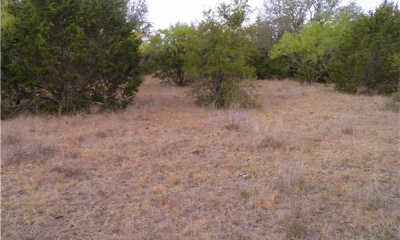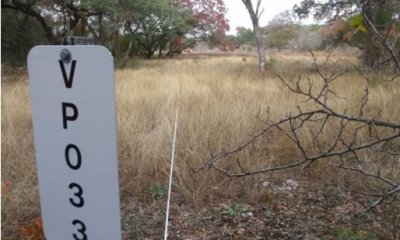
Clay Loam 29-35 PZ
Scenario model
Current ecosystem state
Select a state
Management practices/drivers
Select a transition or restoration pathway
-
Transition T1A
Absence of disturbance and natural regeneration over time coupled with excessive grazing pressure
More details -
Transition T1B
Absence of disturbance and natural regeneration over time
More details -
Transition T1C
Removal of woody species, extensive soil disturbance, followed by seeding
More details -
Restoration pathway R2A
Reintroduction of natural disturbance regimes
More details -
Transition T2A
Absence of disturbance and natural regeneration over time
More details -
Transition T2B
Removal of woody species, extensive soil disturbance, followed by seeding
More details -
Restoration pathway R2B
Reintroduction of natural disturbance regimes
More details -
Transition T3B
Removal of woody species, extensive soil disturbance, followed by seeding
More details -
Transition T3A
Mechanical conversion of juniper to mulch
More details -
No transition or restoration pathway between the selected states has been described
Target ecosystem state
Select a state
State 1
Reference







Description
This state is considered to be representative of the natural range of variability under per-Euro settlement conditions. It is characterized by a warm-season, tallgrass savannah with scattered trees. Community phase changes are primarily driven by wildfire, grazing, and climatic fluctuations.
Submodel
State 2
Shortgrass/Tree State





Description
This state is characterized by a shift the dominant functional and structural groups along with changes in hydrologic cycling. Cool-season herbaceous species dominate the understory and runoff, infiltration, and soil moisture are impacted by increased canopy of woody species.
Submodel
State 3
Shrubland/Tree State





Description
This state is characterized by the dominance woody plants, reduced herbaceous understory, and absence of warm-season species. Hydrologic cycling, nutrient cycling, and energy transfer are being controlled by juniper and woody canopy.
Submodel
State 4
Converted Land State





Description
This state is characterized by extensive soil disturbance, followed by reseeding with native or exotic species or a combination. Species diversity and site resilience has been reduced. Depending on previous land use soil structure may be deteriorated, many soil organisms are missing and the site is at-risk of soil erosion.
Submodel
Mechanism
Continuous season long grazing at moderate to heavy stocking with mixed classes of livestock rate suppress tall grasses. Removal of fire and the lack of brush management as well as adverse weather contribute to the change in the 1.1 plant community to the 1.2.
Mechanism
A lack of fire, integrated brush management and abusive grazing with cattle over long periods of time (30+ years). Alterations of hydrologic cycle, mineral cycle and nutrient cycle are contributing factors. Complete destocking for several years will also lead to a similar situation.
Mechanism
Land clearing, brush management and tillage are the primary drivers to convert land.
Mechanism
Prescribed grazing coupled with brush management and possibly range planting to restore the ecological process of energy flow and hydrology are needed. Fire should be used strategically in the recovery process. Prescribed grazing with mixed classes of livestock coupled with fire and brush management will help manage resprouts.
Mechanism
Removal of mixed classes of herbivory, a lack of fire and brush management along with the increase of woody plants drive this transition.
Mechanism
Land clearing, brush management and tillage are the primary drivers to convert land.
Mechanism
Combinations of mechanical treatment, chemical treatments, and many times range planting will be needed to restore this plant community. Prescribed grazing will also be needed. Unless fire is used, prescribed grazing with mixed livestock and brush management will be needed over time.
Mechanism
Land clearing, brush management and tillage are the primary drivers to convert land.
Model keys
Briefcase
Add ecological sites and Major Land Resource Areas to your briefcase by clicking on the briefcase (![]() ) icon wherever it occurs. Drag and drop items to reorder. Cookies are used to store briefcase items between browsing sessions. Because of this, the number of items that can be added to your briefcase is limited, and briefcase items added on one device and browser cannot be accessed from another device or browser. Users who do not wish to place cookies on their devices should not use the briefcase tool. Briefcase cookies serve no other purpose than described here and are deleted whenever browsing history is cleared.
) icon wherever it occurs. Drag and drop items to reorder. Cookies are used to store briefcase items between browsing sessions. Because of this, the number of items that can be added to your briefcase is limited, and briefcase items added on one device and browser cannot be accessed from another device or browser. Users who do not wish to place cookies on their devices should not use the briefcase tool. Briefcase cookies serve no other purpose than described here and are deleted whenever browsing history is cleared.
Ecological sites
Major Land Resource Areas
The Ecosystem Dynamics Interpretive Tool is an information system framework developed by the USDA-ARS Jornada Experimental Range, USDA Natural Resources Conservation Service, and New Mexico State University.







